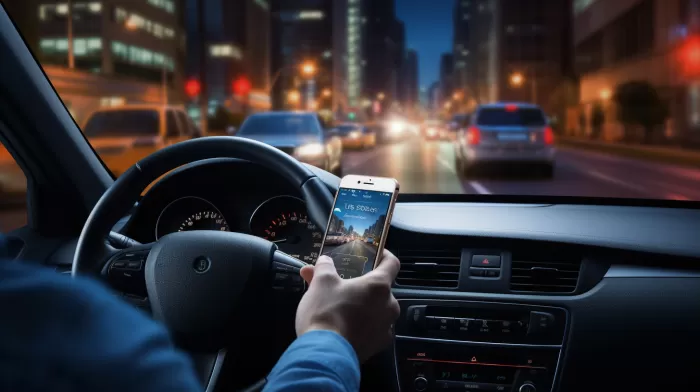Imagine this: you’re cruising on the highway, enjoying your favorite song, when suddenly, you’re stuck behind a slow driver. As you attempt to pass this vehicle, you notice that the driver has a cellphone glued to their ear. Sounds familiar, doesn’t it? Most of us have had similar experiences, but what you may not know is the gravity of the danger present in such scenarios. Driving while talking on a cellphone—whether hands-free or not—puts you and everyone around you at a considerably higher risk of a car crash.
The Real Danger Behind the Wheel
Researchers at the University of Utah have discovered that hands-free cell phones are equally dangerous to drivers as their hand-held counterparts. It’s the conversation itself that distracts you and puts your life in jeopardy. When young adults are engaged in cellphone conversations while driving, their reaction times become noticeably slower—comparable to that of senior citizens. Moreover, drivers on cellphones exhibit similar impairments to those with a 0.08 percent blood alcohol level, the defining threshold for drunken driving in most states.
And it’s not just about personal safety; it affects traffic flow as well. Have you ever found yourself running late because you were trapped behind traffic’s sluggish pace? Cellphone chatter is likely to blame. Drivers engaged in phone conversations tend to drive slower on the highway, pass other vehicles less frequently, and take longer to reach their destinations.
Dave Strayer, a University of Utah researcher, points out that on a daily basis, the average person’s commute is prolonged due to cellphone users. He stressed the frustration this causes, saying, “That SOB on the cell phone is slowing you down and making you late.” Joel Cooper, a doctoral student in psychology who participated in the research, adds, “If you talk on the phone while you’re driving, it’s going to take you longer to get from point A to point B, and it’s going to slow down everybody else on the road.”
How to Minimize the Risk
Ideally, the best course of action would be to avoid talking on the phone while driving, period. But let’s be realistic: in today’s fast-paced, technology-driven world, that’s not always possible. So, here are some guidelines to minimize the risk and make our roads safer for everyone:
- Avoid using your phone at all costs: As previously mentioned, talking on the phone—even hands-free—impairs your driving significantly. If it’s not absolutely necessary to have a conversation, save the call for later.
-
Ask your passenger to call or text: If you’re riding with someone, let them handle the phone communications. This way, you can stay focused on the road while ensuring that urgent messages are delivered.
-
Pull over: If you absolutely must make a call, or if you’re in an ongoing conversation that becomes important, find a safe spot to park your vehicle and continue the discussion. Your safety and that of others around you should always take precedence.
-
Be a responsible cellphone user: As tempting as it may be to check your phone for messages or updates while driving, resist the urge. Doing so distracts your attention from the task at hand—driving.
-
Use an app: Numerous smartphone apps can help minimize distractions by putting your device in “Do Not Disturb” mode while driving. This way, incoming calls and texts will be silenced, allowing you to focus on what truly matters: the road.
Final Thoughts
No conversation is worth risking your life or the lives of others around you. As drivers, we must be aware of the dangerous consequences of engaging in cellphone conversations, even if hands-free, while on the road. By following some simple guidelines, we can significantly reduce the collective risk and contribute to safer roads for everyone.
Let’s make a conscious effort to put down our phones—lives depend on it.



